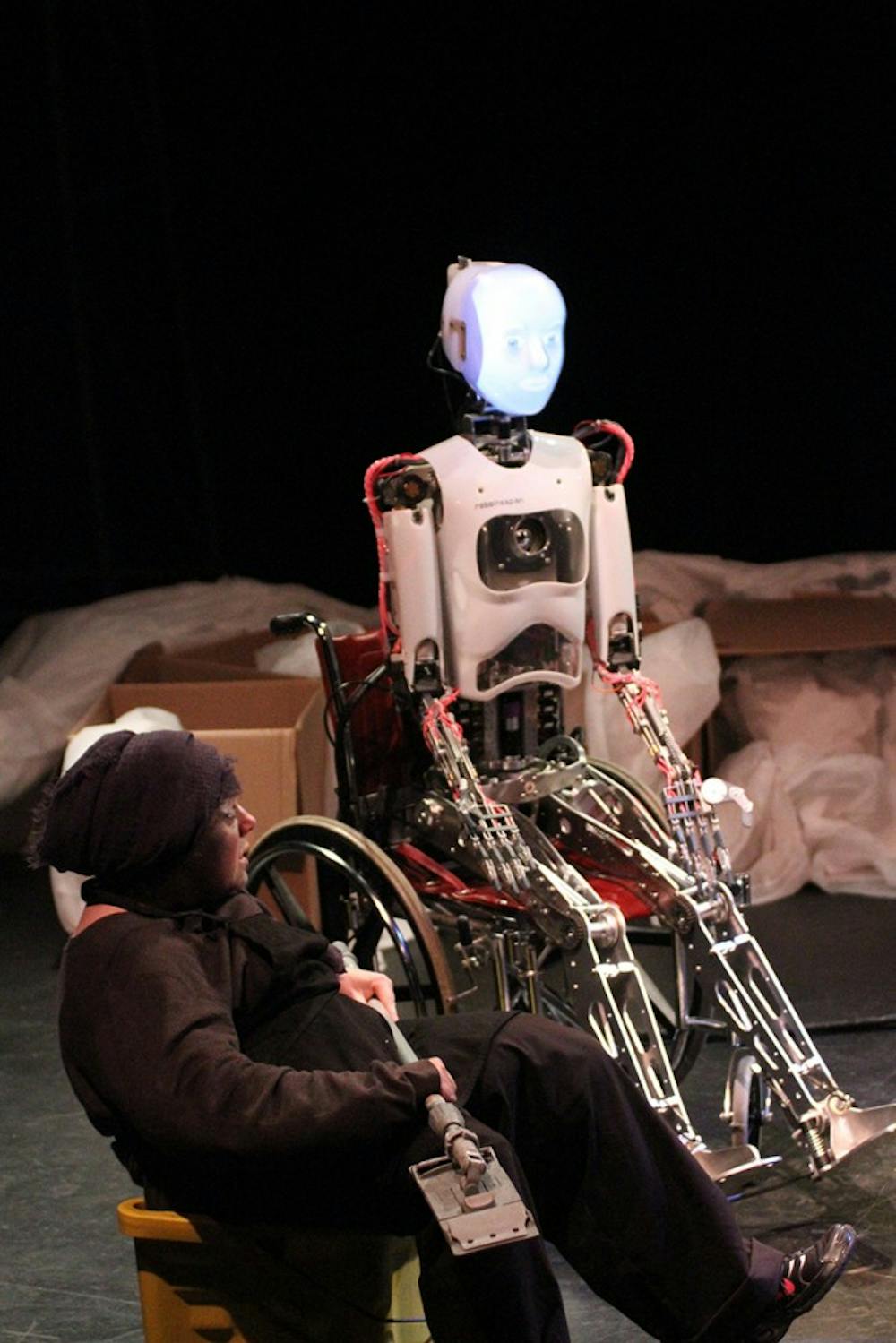Play-goers might be surprised when they sit down to watch “The Uncanny Valley,” and see a life-sized robot on stage speaking with a human voice.
“The Uncanny Valley” explores the life of Edwin, played by sophomore Griffen Bernhard, who just finished college. Because he is having trouble finding a job, he seeks help from a “shady source,” where they tell him he can sell his soul to a robot for a large sum of money. For most of the play, Bernhard shares the stage with Dummy, dubbed the Robothespian, which is a robot that has the ability to regurgitate lines and movements alongside the actor.
To make Dummy’s motions, the actors used a modified Xbox Kinect to record their movements. They then programmed the robot to mimic these movements using a system of cues. Dummy also has a projector in the back of its head, which was used to project Edwin’s face onto the robot.
“Just by watching it you can not vaguely grasp how much work goes into it,” Bernhard said. “The better it is done, the less you’ll realize that there was a ton of work put into it.”
The robot is programmed to speak essentially on a timer, so Bernhard must fit his lines between the robot’s lines.
“It is essentially like talking to myself,” Bernhard said. “Any acting is making any sort of action that is scripted seem natural and spontaneous.”
While “The Uncanny Valley” might appear fun on the surface, much of the play’s basic premise draws on the idea of a Faustian deal, where humankind sells its soul to the devil. At the beginning of the play, the robot, Dummy, looks like a cartoon, but as the play progresses it takes on the human characteristics of Edwin.
Francesca Talenti, communication studies professor, director and playwright, expects the audience to sympathize with the robot.
The title, “The Uncanny Valley,” references the idea of the artificial becoming human, Bernhard said. In a 1970s study, scientists recorded human responses to robots. For most of the study, people responded positively to the robots; but once the robot hit a point where it seemed neither human nor entirely robot, people began to fear, thus responses became negative, creating a valley in an otherwise welcome exploration.



